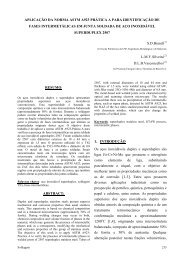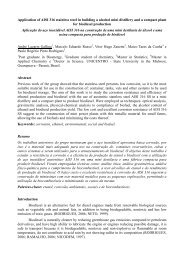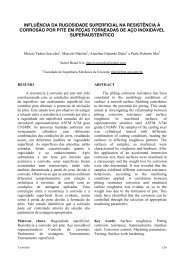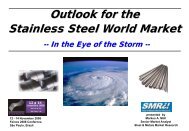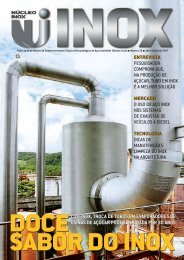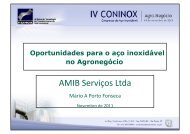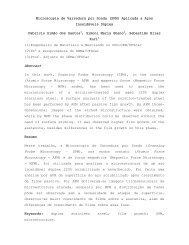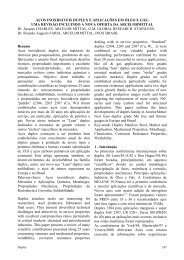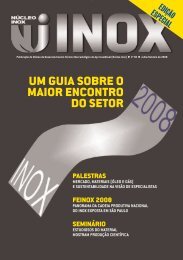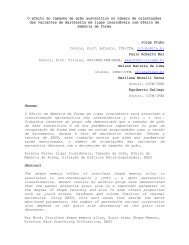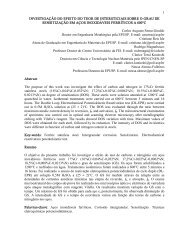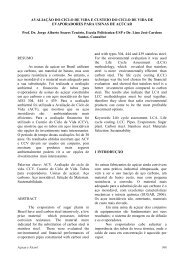The Nickel Advantage - Nickel in Stainless Steel - Eurometaux
The Nickel Advantage - Nickel in Stainless Steel - Eurometaux
The Nickel Advantage - Nickel in Stainless Steel - Eurometaux
You also want an ePaper? Increase the reach of your titles
YUMPU automatically turns print PDFs into web optimized ePapers that Google loves.
Chapter 2<br />
Corrosion Resistance<br />
<strong>Nickel</strong> contributes<br />
to corrosion “<br />
resistance.<br />
”<br />
Stress Corrosion Crack<strong>in</strong>g <strong>The</strong>re are many different types of stress corrosion crack<strong>in</strong>g<br />
(SCC). Austenitic sta<strong>in</strong>less steels have very good stress corrosion crack<strong>in</strong>g reistance <strong>in</strong><br />
hydrogen sulphide environments, such as are found <strong>in</strong> the natural gas sector. Austenitic<br />
sta<strong>in</strong>less steels and more recently duplex sta<strong>in</strong>less steels have shown excellent long term<br />
performance and guidel<strong>in</strong>es for their use can be found <strong>in</strong> standards such as NACE<br />
MR0175/ISO 15156.<br />
Chloride stress corrosion crack<strong>in</strong>g has been studied for years, and many people are familiar<br />
with the “Copson Curve,” derived from test<strong>in</strong>g <strong>in</strong> aggressive boil<strong>in</strong>g magnesium chloride. It<br />
has shown that the ferritic sta<strong>in</strong>less steels without a nickel addition are superior to the<br />
standard sta<strong>in</strong>less steels with 6-12% nickel. Alloys with more than 45% nickel were found<br />
to be virtually immune to crack<strong>in</strong>g <strong>in</strong> magnesium chloride. In practice, most other chloride<br />
solutions are far less aggressive than the magnesium chloride, and while grades such as 304<br />
and 316L are generally avoided, the sta<strong>in</strong>less alloys with 6% molybdenum have sufficient<br />
resistance <strong>in</strong> most cases, as do the duplex sta<strong>in</strong>less steels.<br />
Figure 10:<br />
Copson Curve – Effect of nickel on<br />
the susceptibility of sta<strong>in</strong>less steels<br />
to chloride stress corrosion crack<strong>in</strong>g<br />
<strong>in</strong> boil<strong>in</strong>g magnesium chloride.<br />
1000<br />
Crack<strong>in</strong>g<br />
Break<strong>in</strong>g time (hr)<br />
100<br />
10<br />
M<strong>in</strong>imum time to crack<strong>in</strong>g<br />
No crack<strong>in</strong>g<br />
Innovative use of sta<strong>in</strong>less<br />
steel for solar reflectance<br />
and energy sav<strong>in</strong>gs<br />
Photo courtesy of:<br />
Rafael V<strong>in</strong>oly Architects PD<br />
[Pittsburgh convention centre]<br />
1<br />
Indicates<br />
commercial wire<br />
Did not crack <strong>in</strong><br />
30 days<br />
0 20 40 60 80<br />
<strong>Nickel</strong> (%)<br />
PAGE 26<br />
www.nickeladvantage.org





